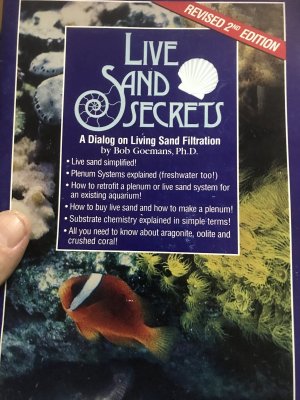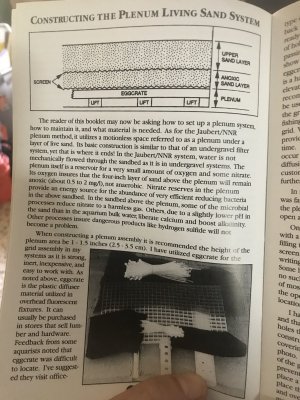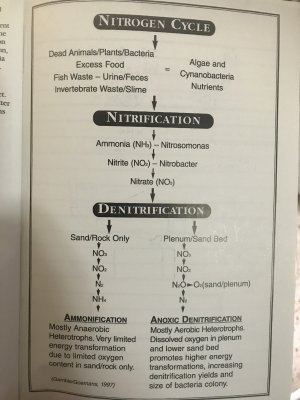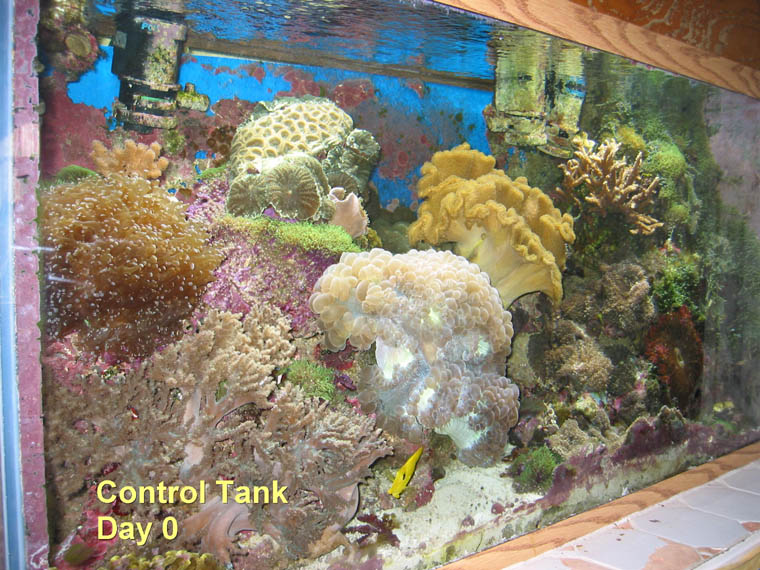Here are pictures of pamphlet and some pages. This was copyrighted in 2000.I thought about using mudd also, I ultimately chose the 5 gal. bucket RDSB because it has a benefit of acting like a calcium reactor. I have about 14" of Aragonite in my bucket and the deeper the sand bed, below the anoxic layer, the water actually becomes acidic, causing a small amount of the Aragonite to dissolve into the water column, as I'd always had a problem keeping my Ph high enough. Once the RDSB was online, Ph went to 8.4 and stayed there, no matter what time of day/night I took a reading.
Incidentally, I just checked the Nano tanks ph and amonnia with a piece of live rock that I'm quarantining before seeding my show tank. After one month, Ph is already reading 8.1 from a start of 7.8. So, it seems that the 15 oz plastic bottle with Aragonite is doing it's job.
Now, I'm reading .25 ammonia, down from 4.0 last week. I ghost feed about once a week. Still not showing any nitrite though... But maybe my test fluid may have become out of date. Anyone know if API brand goes bad over time?



















